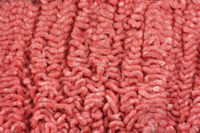Report: Fresh ingredients popularity cools frozen food growth

The rising consumer demand for fresh refrigerated products and ingredients is having an impact on the frozen foods industry and challenging future growth, according to a new report from market analysts at Packaged Facts.
“Many consumers have come to believe that only fresh foods offer real nutritional value,” says David Sprinkle, research director at the firm. “These consumers perceive frozen dinners as a remnant of a past dining era in which these products were valued more for their convenience than their healthiness. Unfortunately, the fact that frozen foods can potentially offer the same nutritional value as fresh or refrigerated foods is simply lost on consumers holding this anti-frozen foods view point.”
This latest trend is a partly a result of consumer preferences for products made without preservatives. Many frozen foods, but certainly not all, contain preservatives such as potassium sorbate, calcium propionate, and sodium tripolyphosphate among their ingredients. Researchers say that as increasing numbers of consumers come to focus their attention on labels, seeking products that are natural, these ingredients, while providing a boost to freshness, turn out to be a detriment in terms of sales. Furthermore, sales of once popular diet-oriented frozen foods and snacks are thawing as they come under scrutiny for high salt content.
Packaged Facts says the challenge of freshness is hitting frozen foods from all sides. There are more and more sources, such as farmers markets and expanded produce sections in traditional supermarkets and in supercenters like Wal-Mart, who in recent years proclaimed intentions to put a new focus on providing fresh foods. Even convenience stores, not traditionally known for carrying fresh products, are expanding their fresh offerings.
However, frozen products dubbed natural or organic are proving to be popular with consumers who see the labeling as an endorsement the products are in some way fresher or, at least, healthier and relieved of their concerns about preservatives.
Packaged Facts estimates that sales of the collective frozen food categories dinners/entrées, pizzas, side dishes, and appetizers/snacks will increase from $22 billion in 2014 to $23 billion in 2019. Frozen side dishes and appetizers/snacks are the two categories projected to garner the most growth.
Looking for a reprint of this article?
From high-res PDFs to custom plaques, order your copy today!







